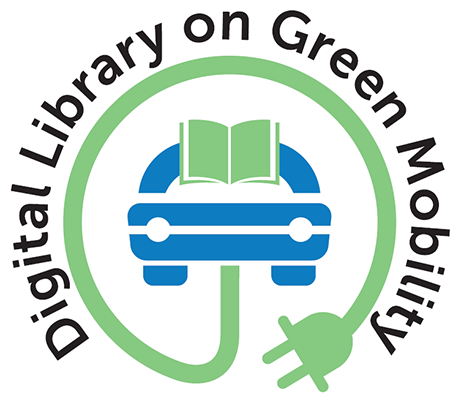Reports
Towards a better Hong Kong: pathways to net zero carbon emissions by 2050
2020
Author(s): Jiang X, Lu L, Gibson JR, Chan L, Fong WK, Henning R
Hong Kong kicked off a public engagement program during June to September 2019 to collect public views, and it will subsequently formulate a long-term decarbonisation strategy. Many cities have committed to carbon neutrality or deep decarbonisation by 2050 or earlier. Copenhagen, for example, committed to being carbon neutral by 2025, and London and New York committed to being carbon neutral by 2050. If Hong Kong can achieve net zero emissions like these cities?
How countries’ nationally determined contributions (NDCs) are implemented and improved upon over time will determine whether the long-term temperature goal of the Paris Agreement is achieved. Each country will prepare for and implement its NDC in different ways, based on the nature of its NDC, how the NDC was first developed, and its national circumstances. Recognizing that NDC implementation is inherently country-driven and location-specific, this document is not meant to be prescriptive. Instead it provides an overview of critical issues that countries can keep in mind while devising their implementation strategies.
Quantifying the grid impacts from large adoption of electric vehicles in China
2020
Author(s): Xue L, Jian L, Ying W, Xiaoshi L, Ying X
Synthesizing results from WRI China’s EV-Grid Simulator, this report analyzes the grid impacts of different types of EV charging within two Chinese cities and recommends the use of VGI measures to defer costly grid capacity expansions.
Enhancing NDCs: a guide to strengthening national climate plans
2019
Author(s): Fransen T, Sato I, Levin K, Waskow D, Rich D, Ndoko S, Teng J
The report is designed to help practitioners think through how to structure their country’s enhanced NDCs across three dimensions: strengthening targets to reduce emissions (mitigation), enhancing climate resilience (adaptation) and clearly communicating their actions to build trust and facilitate effective implementation.
Toward Paris alignment: how the multilateral development banks can better support the Paris agreement
2018
Author(s): Larsen G, Smith C, Krishnan N, Weischer L, Sand B, Fekete H
The report is based on an extensive review of policy and academic literature and official documents. We also conducted semi-structured interviews with 115 MDB staff, representatives from MDB member countries, and other relevant stakeholders. Interviews took place at the headquarters of several MDBs and in seven countries that receive MDB finance: Argentina, Brazil, India, Kazakhstan, Sri Lanka, Tunisia, and Uganda.
Stories from the WRI sustainability “Living Lab”: annual sustainability report and 2015–2016 greenhouse gas emissions inventory
2018
Author(s): Kamins A, Metzger E, Miao L, Rubnitz T, Trostmann K, Waite R, Xu S
This report features the results of WRI’s 2015–2016 Greenhouse Gas Emissions Inventory. It also shares stories that go in-depth on sustainability projects that were active during the reporting period. Together, the quantitative GHG emissions data and the sustainability stories highlight WRI’s experiences in meeting the competing demands of organizational growth and WRI efforts to reduce absolute environmental impacts.
Accelerating mini-grid deployment in Sub-Saharan Africa: lessons from Tanzania
2017
Author(s): Odarno L, Sawe E, Swai M, Katyega MJJ, Lee A
This report is the first major survey of Tanzania’s mini-grid sector. In it, we shed light on lessons from Tanzania that can help accelerate mini-grid deployment across countries in sub-Saharan Africa. This comprehensive study will be valuable to the large and growing community that is banking on mini-grids to transform energy access in Africa.
Before introducing any mitigation policies, it is essential to thoroughly quantify the emissions inventories and impact costs. However, many developing countries do not have the capacity to quantify the emissions inventories and impact costs from the transport sector because of limited technical support, methodology, data, and awareness. This study was thus designed to help these cities and countries fill such gaps.
The future electricity grid: key questions and considerations for developing countries
2016
Author(s): Jairaj B, Martin S, Ryor J, Dixit S, Gambhir A, Chunekar A, Bharvirkar R, Jannuzzi G, Sukenaliev S, Wang T
Renewable energy (RE) is growing worldwide, with a six-fold increase in non-hydro renewables over the last decade from 85 to 657 gigawatts (GW). This report reviews the key trends that explain growth in RE, and highlights how they are challenging decision making in countries such as Brazil, China, India, and Kyrgyzstan.
Private investment in public transport success stories for Brazilian cities
2015
Author(s): Lefevre B, Leipziger D
This report examines two case studies from Brazil: Linha 4 of the São Paulo Metrô, and Estação Barreiro bus terminal in Belo Horizonte. Based on WRI research on private climate finance (Polycarp et al. 2013; Venugopal and Srivastava 2012), the study adopt a framework that analyzes public interventions on two levels: supporting enabling conditions at the market level and implementing de-risking instruments at the project level.



